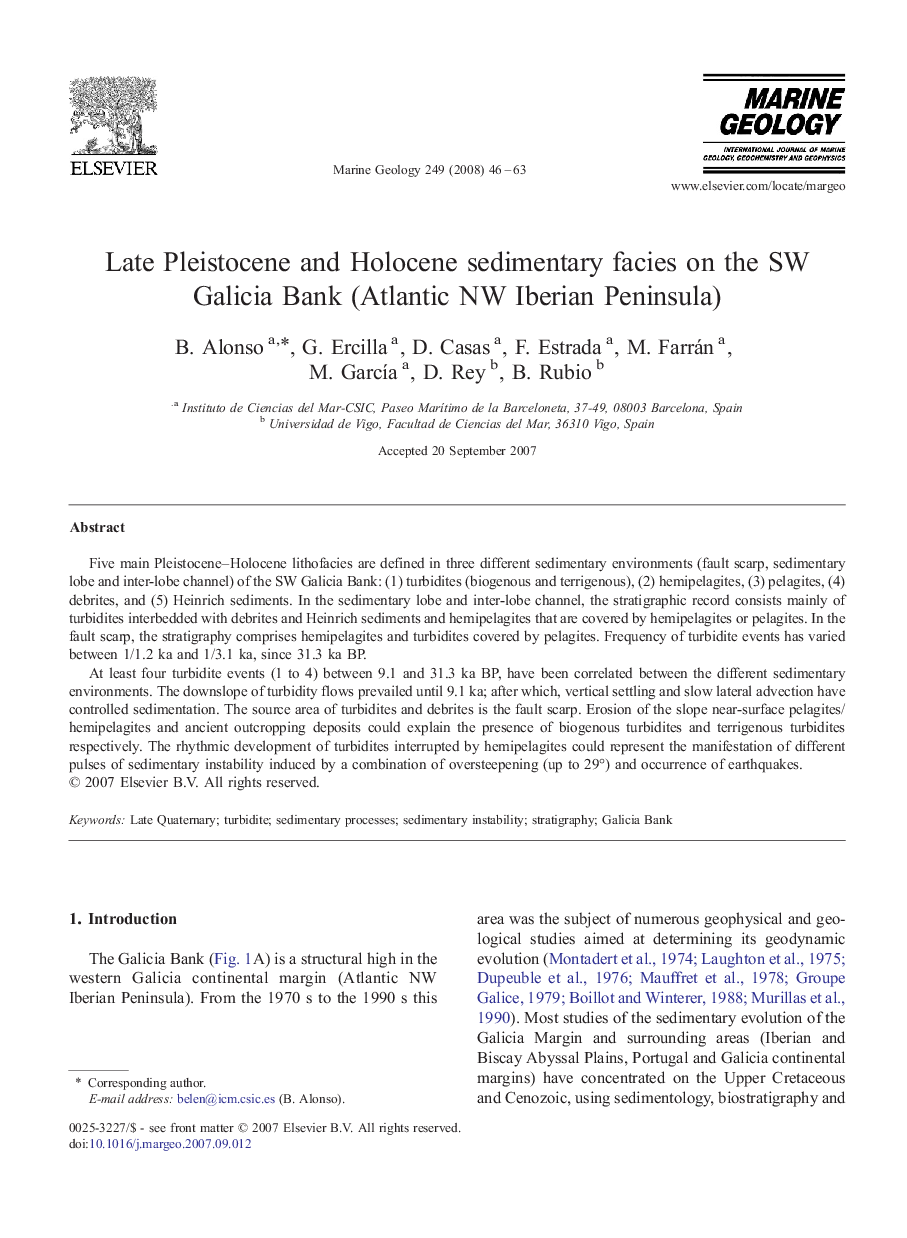| Article ID | Journal | Published Year | Pages | File Type |
|---|---|---|---|---|
| 4719325 | Marine Geology | 2008 | 18 Pages |
Five main Pleistocene–Holocene lithofacies are defined in three different sedimentary environments (fault scarp, sedimentary lobe and inter-lobe channel) of the SW Galicia Bank: (1) turbidites (biogenous and terrigenous), (2) hemipelagites, (3) pelagites, (4) debrites, and (5) Heinrich sediments. In the sedimentary lobe and inter-lobe channel, the stratigraphic record consists mainly of turbidites interbedded with debrites and Heinrich sediments and hemipelagites that are covered by hemipelagites or pelagites. In the fault scarp, the stratigraphy comprises hemipelagites and turbidites covered by pelagites. Frequency of turbidite events has varied between 1/1.2 ka and 1/3.1 ka, since 31.3 ka BP.At least four turbidite events (1 to 4) between 9.1 and 31.3 ka BP, have been correlated between the different sedimentary environments. The downslope of turbidity flows prevailed until 9.1 ka; after which, vertical settling and slow lateral advection have controlled sedimentation. The source area of turbidites and debrites is the fault scarp. Erosion of the slope near-surface pelagites/hemipelagites and ancient outcropping deposits could explain the presence of biogenous turbidites and terrigenous turbidites respectively. The rhythmic development of turbidites interrupted by hemipelagites could represent the manifestation of different pulses of sedimentary instability induced by a combination of oversteepening (up to 29°) and occurrence of earthquakes.
